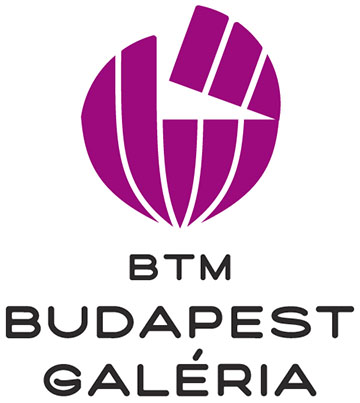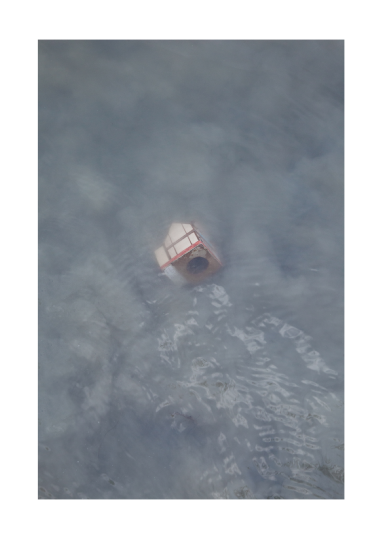HAZAÚTTALAN | Aslan Goisum, Fátyol Viola, Neogrády-Kiss Barnabás, Iulia Toma
kurátor | ERŐSS NIKOLETT
megnyitó | 2020. január 29. 18:00
a kiállítást megnyitja | GYÜKERI MERCÉDESZ, a HVG újságírója
web | http://budapestgaleria.hu/_/20...
a kiállítás bezárása | 2020. március 15.
cím | Budapest Galéria
BUDAPEST GALÉRIA
1036 Budapest, Lajos utca 158. (földszint)
Hazaúttalan
Aslan Goisum | Fátyol Viola | Neogrády-Kiss Barnabás | Iulia Toma
Megnyitó: 2020. január 29., (szerda) 18:00
Megnyitja: GYÜKERI MERCÉDESZ, a HVG újságírója
A kiállítás kurátora: ERŐSS NIKOLETT
A kiállítás az otthontalanság és az átmenetiség jelenségeivel foglalkozik, az otthon elhagyásának kényszere és a visszatérés vágya közötti senkiföldjével, ahol mérhetetlenül sokan lakni kényszerülnek. A biztosnak vélt háttér elvesztése, vagy a biztonság soha meg nem élése szerteágazó hátterű, de alapvető tapasztalat sokak számára, olyan, az életet meghatározó mély nyom, ami többeket születésük óta kísér.
Neogrády-Kiss Barnabás fényképeinek szereplői gyerekként tapasztalják meg az otthon, a családi környezet elvesztését, majd, szerencsés esetben, másként összeállását. Az állandó átmenetiség, amelyben a gyermekfalvakban, nevelőszülőknél élő gyerekek élnek a képeken azonban leginkább a szimbólumokban gondolkodás és értelmezés által van jelen: a játszótér, a madárház, a trambulin ugyanolyannak tűnik, mint máshol, a játék itt is kerek világot épít.
Fátyol Viola Süllyedő háza az otthon elvesztésének félelmét sűríti magába, fel-felbukkanó emlék, lezáratlan gyász. E szorongató vízió: a gyerekjátékot idéző ház kiszolgáltatottsága ismerős, felnőttként is eleven tapasztalat. A házilag készített, hétköznapi tárgyakból fabrikált fehér zászlókat ábrázoló sorozat (A megadás zászlói) a kilátástalanság és a privát szférába visszahúzódás tanúja. Itt még van hova menekülni, van honnan összeszedegetni a tárgyakat, de amit ezek kiadnak – a megadás fehér zászlaja –, annak kényszerű tehetetlenségét játékossága és kényszerű kreativitása sem írja felül.
A textilek hordozta otthonosság, az anyagok és a hímzés taktilitása, személyessége a kényszerű migráció fénytörésébe kerül Iulia Toma textiljein (Váratlan álmok / Álmok és várakozások). A művész számos Romániában tartózkodó afgán, szír és iraki menekülttel készített interjút, ezekből a beszélgetésekből emelt ki részleteket, az otthon vágyát, hiányát, elvesztésének körülményeit. A nagyméretű, többrétegű, használt, azaz „emlékező textilekből” készített installáció a hosszú utak egy-egy egészen apró szeletét teszi bejárhatóvá.
A trauma elbeszélhetetlensége és a feltárására való felszólítás (úgyis mint a történelemírás egy formája) feszültsége Aslan Goisum filmjének egyik kiindulópontja (Következmény nélküli emberek). A Második Világháborúban Sztálin megbízására a teljes csecsen és ingus népet vagonokban deportáltak Közép-Ázsiába. Aslan Goisum túlélőket hívott meg egy találkozóra Groznijba 2016-ban. Az események tanúi néma csendben foglalják el helyeiket a teremben, szótlanságuk kérdő és felszólító, a tudás és a megszólalás felelősségét a nézőnek adják tovább.
Támogató: Román Kulturális Intézet
///////////////////////////////////////////////////////////////////////////////////////
BUDAPEST GALLERY
1036 Budapest, Lajos utca 158.
HOME/WARD BOUND/LESS
Aslan Goisum | Viola Fátyol | Barnabás Neogrády-Kiss | Iulia Toma
Curator: NIKOLETT ERŐSS
Opening: 29 January, 2020 6 pm
Opening speech by: MERCEDES GYÜKERI, journalist at HVG
On view: 30 Januray – 15 March 2020
The exhibition deals with the phenomena of homelessness and transience, the no-man’s-land which lies between the necessity of leaving one’s home and the desire to return, a place where too many people are forced to live. There are many reasons why people lose what they had thought to have been a secure world or never even have any sense of security, but for many, this loss or this state is a fundamental experience which has left a deep, life-defining imprint that has been part of their lives since birth.
The figures in Barnabás Neogrády-Kiss’ photographs experience the loss of a home and family environment as children and, then, in fortuitous cases, the reconstruction of this home and this world in a different form. The permanent state of transition in which these children live in children villages or with foster parents appears in these images through a manner of thinking and interpreting in symbols: the playground, the birdhouse, and trampoline look much the same here as they do in other places, games build a meaningful world here too.
The Sinking House of Viola Fátyol conveys the fear of losing one’s home, an intermittently recalled memory, mourning without closure. This gripping vision: the vulnerability of a house which resembles a child’s toy is a familiar, vivid experience for adults too. The series depicting homemade white flags made out of everyday objects (Flags of Surrender) captures a sense of hopelessness and retreat into the private sphere. There is still room to escape here, there is still a place from where objects can be gathered, but what they summon – the white flag of surrender – even with its playfulness and strained creativity cannot carry us beyond helpless isolation.
The cosiness of textiles, the tactility of the materials and the embroidery and the personal quality of the fabrics and embroidery appear in the refractions of forced migration in Iulia Toma’s textiles (Unexpected Dreams / Dreams and Expectations). Toma interviewed Afghani, Syrian, and Iraqi refugees in Romania, and she highlights details of these conversations, the desire for a home, the lack of a home, and the circumstances of its loss. The installation, which is made of large, multi-layered, used, that is, “reminiscing textiles”, allows tiny portions of the long journeys to be experienced.
The tension stemming from the impossibility of recounting the trauma and the need to narrate it (as a criterium of historiography) is one of the points of departure for Aslan Goisum’s video work (People of No Consequences, 2016). During World War II, the entire Chechen and Ingush population was deported in wagons to central Asia at Stalin’s orders. In 2016, Aslan Goisum invited survivors of the deportation to a meeting in Grozny. The witnesses take their seats in the silent room. Their silence is questioning and beseeching, passing on the responsibility of knowledge and speaking up to the viewer.
Open daily except Mondays: 10 am – 6 pm
Supporting: Romanian Cultural Institute

Térkép
Ne elégedjen meg az artKomm levelek olvasásával! Az ikOn weboldalán sokkal több információt talál az eseményekről.





















